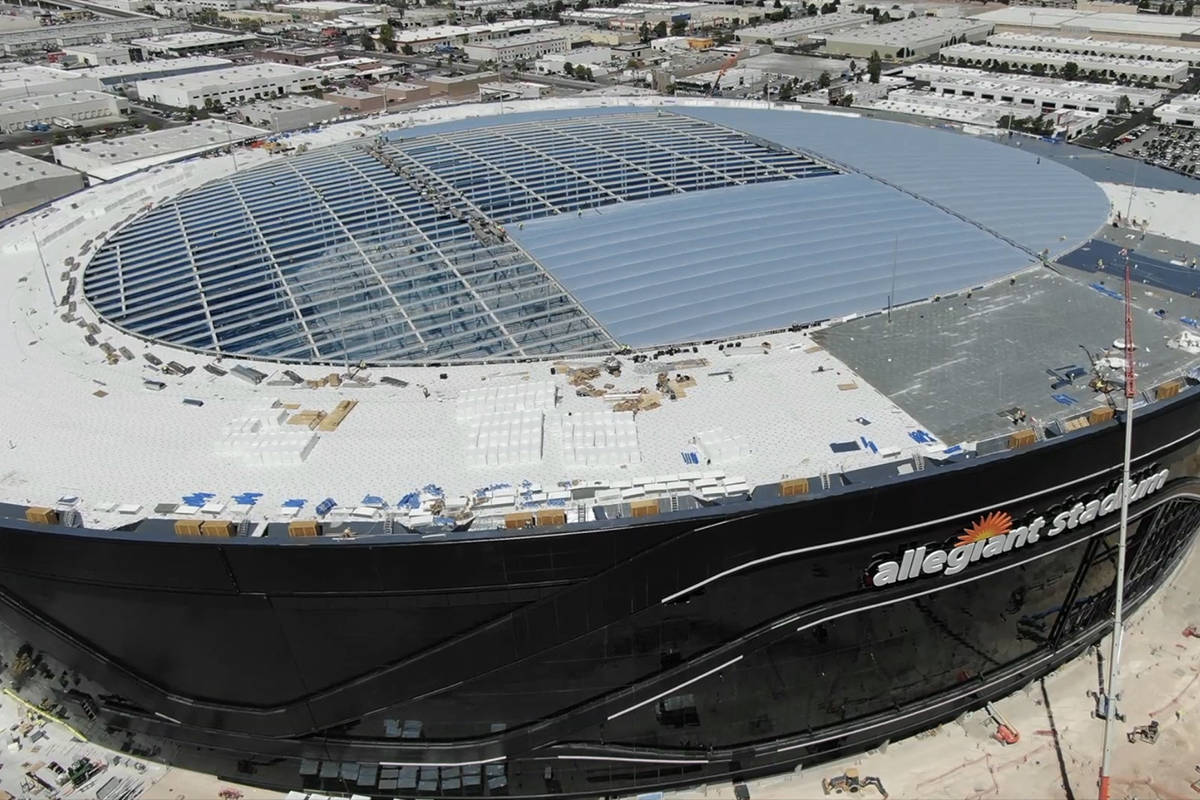Canceled NFL draft provided valuable aid for transit staff

Even though the NFL draft in Las Vegas was canceled because of the COVID-19 pandemic, it was still a learning experience for area transit planners.
With the complexity of the schedule surrounding the setup, the actual draft and the tear-down, the logistics behind the draft were going to be a major key to the event’s success.
Work was slated to begin near the Fountains of Bellagio on Wednesday, with rolling road impacts on Las Vegas Boulevard and Flamingo Road expected to stretch through May 1.
The Regional Transportation Commission of Southern Nevada was set to play a big role in the plans, which were in the final stages after several months of planning.
“We got all of our partners together on the public sector and the private sector and made sure that we were coordinating to make sure we have everything in place to make those events successful,”said Brian Hoeft, director of RTC’s Freeway and Arterial System of Transportation.
Hoeft likened the planning to what occurs for any other large-scale event such as Electric Daisy Carnival or a NASCAR race at Las Vegas Motor Speedway, or a large convention at the Las Vegas Convention Center.
“When you have a big event like that, it doesn’t just affect the main footprint,” Hoeft said. “For the draft, the focus was on Las Vegas Boulevard, Flamingo Road and those places. But when we work with NDOT (Nevada Department of Transportation), we have to plan for what happens on the freeways. Are there going to be backups? We can use our new signs (active traffic management signs) to help with that.”
The planning sessions will come in handy as the NFL draft could return to the city as soon as 2022 and the Super Bowl is expected to be held in Las Vegas within the next few years.
Additionally, the RTC will be a key player when Allegiant Stadium comes online later this summer, with over 40 large events — including multiple Raiders and UNLV football games — slated to occur each year at the 65,000-seat stadium.
“A nice example with the stadium is to compare it to what we do with the convention center, the speedway and T-Mobile Arena,” Hoeft said. “We make sure the capabilities I have here at the traffic management center is similar to what we would have at those locations. So a staff person can be embedded in those locations and still be able to see the cameras, see what’s happening with the traffic signals and talk directly with the people who are in those different centers.”
An RTC employee will be embedded in the stadium’s control room during large events where law enforcement, fire officials and others pertinent to game-day operations will be monitoring various aspects surrounding the stadium.
“We can have someone in the same room (as first responders) where we will also have access to the cameras, the traffic signals and all of that,” Hoeft said.
RTC staff will also be on hand at the transit agency’s traffic management center, located not far from the stadium, to ensure all equipment needed to control traffic is working properly and to address any issue that may arise.
On-site parking at the stadium has around 2,700 spots, but the Raiders have purchased various lots in all directions from the stadium, with some within walking distance and others requiring shuttle service. Ride-hailing services are also expected to be a big player in game-day transportation, as well as fans walking from the resort corridor.
Hoeft sees Allegiant Stadium’s dispersed parking as a plus for traffic following events there.
“There is definitely going to be some benefits to the way (parking) is set up,” Hoeft said. “Everybody is very aware of what the parking footprint is and they have an expected time frame for people to park and make their way to the stadium, and this is what we expect to happen for the time period after the event.”
Contact Mick Akers at makers@reviewjournal.com or 702-387-2920. Follow @mickakers on Twitter.